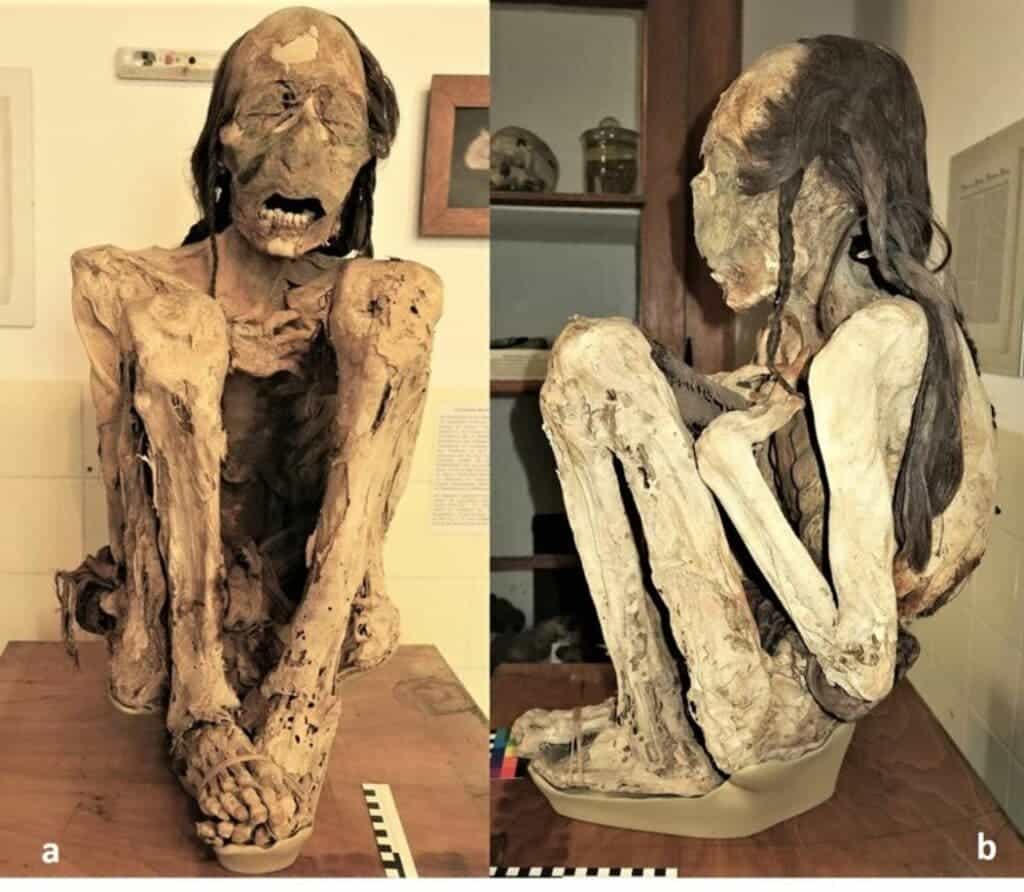When we think of mummies, we think of Egyptian royalty and natural passing. But new research on mummies in South America shows that this wasn’t always the case.

An analysis of three pre-Columbian South American mummies housed at institutions in Europe, one at the Philipps University Marburg, Germany and two from the Art and History Museum of Delémont in Switzerland, helps showcase how violent the lives of our ancestors could be, and shines a new light on how mummification can help preserve this evidence.
The study relied on X-ray and 3D computed tomography (3D CT) scans to peer into the internal structures of these mummies without having to open them up and risk damaging them in any way.
Violently mummified
“Here we show lethal trauma in two out of three South American mummies that we investigated with 3D CT,” says pathologist Andreas Nerlich from the Munich Clinic Bogenhausen in Germany, corresponding author of the paper. “The types of trauma we found would not have been detectable if these human remains had been mere skeletons.”
We can learn much about how our ancestors lived through the study of their remains. And although bones can go a long way in this regard, mummified remains are a much richer source of information due to their preserved soft tissues.
This brings us to today’s research. The three mummies used in the study were bodies that had been mummified naturally, not through an intentional process. They formed in dry environments, where the fluids they contained were absorbed by their surroundings faster than the rate of decay could decompose the bodies.
The mummy at the Philipps University Marburg was a male that originally belonged to the Arica culture, which inhabited the northern area of modern Chile. He most likely lived in a fishing community and his lungs show signs of severe tuberculosis. Radiocarbon dating suggests that he died between 999 and 1147 CE, at an age of between 20 and 25. The two mummies at the Art and History Museum of Delémont in Switzerland likely come from the Arequipa culture in today’s southwestern Peru. The man died sometime between 902 and 994 CE, and the woman between 1224 and 1282 CE.
Both of the men showed signs of “interpersonal violence”, according to the researchers. The violent acts they experienced likely killed them on the spot. The Marburg mummy died from a heavy blow to the head and a stab to the back, from either one or two attackers. About the male Delémont mummy, the researchers note seeing “massive trauma against the cervical spine which represents most likely the cause of death”. This means that the most likely cause of death of this individual was receiving a hard blow to the back of the neck.
Finally, the skeleton of the female Delémont mummy also showed signs of damage, although the team is confident that this was sustained after death, most likely during the burial.
“The availability of modern CT scans with the opportunity for 3D reconstructions offers unique insight into bodies that would otherwise not have been detected,” says Nerlich.
“Previous studies would have either destroyed the mummy, while x-rays or older CT scans without three-dimensional reconstruction functions could not have detected the diagnostic key features we found here.”
The authors explain that the findings help us understand how people in ancient civilizations lived and got along, or didn’t. They also help shed more light on where violence fit inside these societies. The current paper is especially valuable in this regard as mummified remains are much rarer than skeletal remains. Despite this, there are numerous such mummies that have been recovered and are currently preserved in museums, so they can act as an important source of information if investigated using a similar process to the one described in this study.
“Importantly, the study of human mummified material can reveal a much higher rate of trauma, especially intentional trauma, than the study of skeletons,” says Nerlich. “There are dozens of South American mummies which might profit from a similar investigation as we did here.”
The paper “Trauma of bone and soft tissues in South American mummies—New cases provide further insight into violence and lethal outcome” has been published in the journal Frontiers in Medicine.


